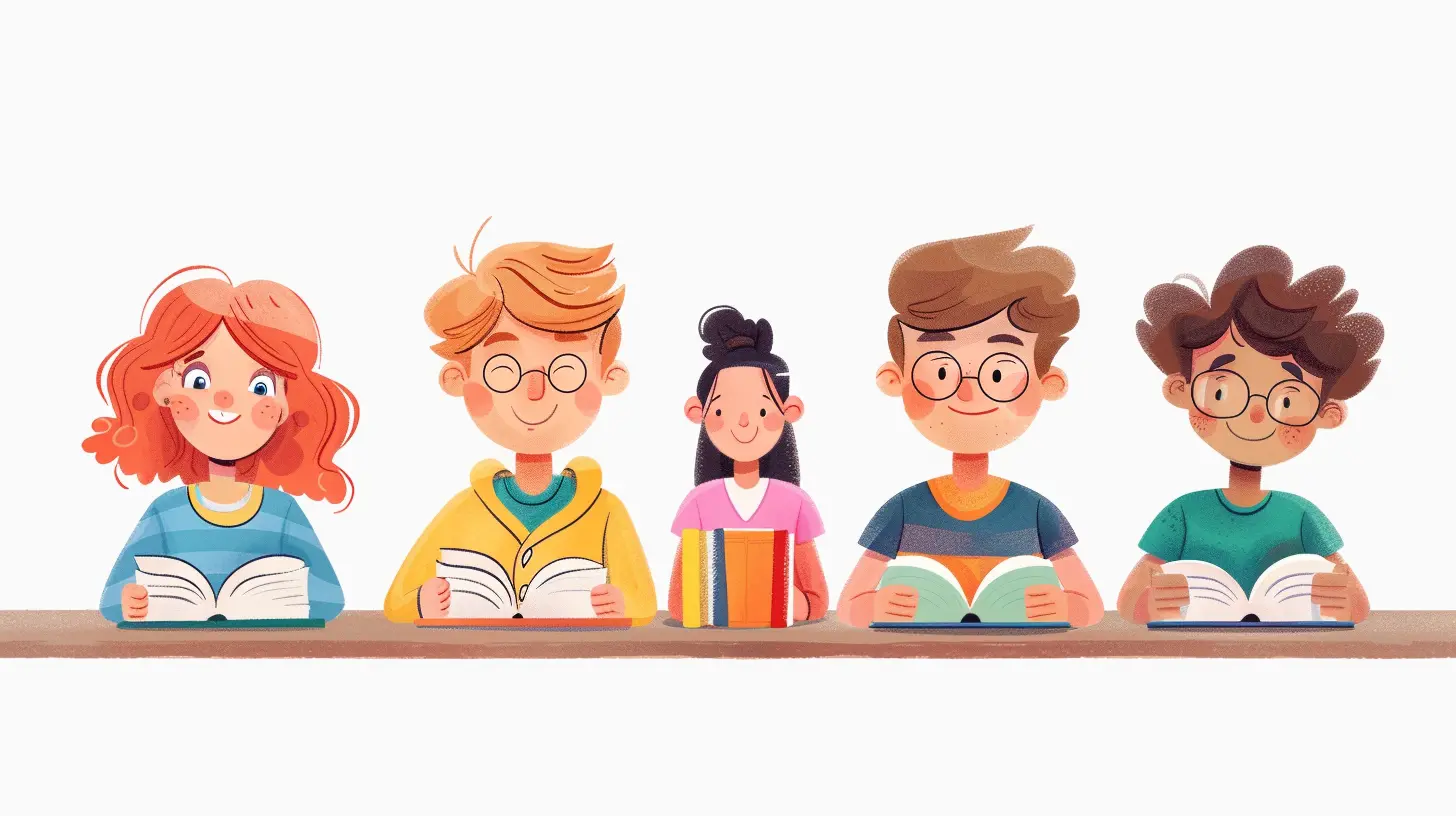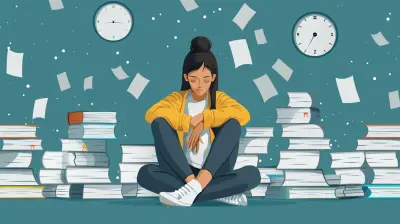How to Facilitate Peer Feedback Through Collaborative Activities
27 July 2025
Let’s be real for a second—getting students to give each other useful feedback can feel like pulling teeth. You know it’s crucial (hello, 21st-century skills!), but somehow student feedback often turns into vague comments like “great job!” or “I liked it.” Not helpful. Not even a little.
So how do we change that? How do we actually train our students to provide meaningful peer feedback that sparks growth, builds confidence, and leads to real learning? The answer lies in one powerful concept: collaboration. Yep, when students work together in purposeful, structured ways, peer feedback starts to bloom naturally.
In this article, we’re diving headfirst into the juicy topic of how to facilitate peer feedback through collaborative activities. Buckle up, because by the end, you’ll have a toolkit full of strategies that will transform the way your class interacts and learns. 🌟
Why Peer Feedback Matters (More Than You Think)
Before we get into the “how,” let’s chat about the “why.” Why is peer feedback such a big deal anyway?Think about it—when students give and receive feedback, they’re:
- Practicing critical thinking
- Learning to communicate effectively
- Developing empathy
- Becoming more self-aware
- Taking more ownership of their learning
The process isn’t just about improving one assignment. It’s about building lifelong learners who can think deeply and support others.
But here’s the catch: for feedback to be effective, it needs to be specific, thoughtful, and timely. That’s where collaborative activities come into play.
What Makes Peer Feedback Effective?
Before you toss your students into group work and expect magic to happen, let’s lay some groundwork. Effective peer feedback typically checks these boxes:✏️ Focused on Learning Goals – Feedback should tie into specific objectives or rubrics.
🧠 Reflective & Thoughtful – It should push the receiver to think more deeply.
💬 Constructive, Not Destructive – We want to build, not break.
⏱️ Timely – Feedback should be given while the task is still fresh.
📣 Student-Led – When students take the lead, they’re more engaged.
When built into collaborative activities, these qualities can evolve naturally—if those activities are structured the right way.
The Sweet Spot: Collaboration & Peer Feedback
Here’s a little secret: Collaborative learning environments create the perfect breeding ground for peer feedback. Why? Because when students work together toward a common goal, they’re more invested in the outcome and more willing to help each other improve.Plus, the act of collaborating unlocks more informal feedback moments—little nudges, questions, and support that happen naturally when people work side by side.
Let’s break down a few powerful ways to make this happen.
1. Structured Peer Review Workshops 🧾
Don’t underestimate the power of a good old-fashioned peer review session—but give it a modern twist. Set up peer feedback “workshops” where students rotate through each other’s work using structured prompts or sentence starters.Here’s how to do it:
- Give students a clear rubric to follow.
- Use sentence stems like: “One strength I noticed was…” or “I wonder if you could…”
- Break it into timed rounds with specific focuses (e.g., focus on clarity in Round 1, on evidence in Round 2).
- End with reflection—what did they learn from this process?
Why this works: It turns the vague “read and respond” into a laser-focused activity that teaches students how to give constructive, helpful feedback.
2. The “Gallery Walk” Method 🎨
This one’s perfect for group presentations, posters, storyboards, or even draft essays. Think of it as an art exhibit—but for student work.Here’s the game plan:
- Display group work around the classroom.
- Hand out sticky notes or digital comment sheets.
- Students “tour” the room and leave feedback at each station.
- Feedback should include one positive comment and one actionable suggestion.
Bonus: Make it interactive by allowing the original creators to respond or revise in real time.
Why this works: It adds movement, energy, and anonymity—making students more honest and less anxious.
3. Think-Pair-Share… Evolved 💭➡️👯
You’ve probably used Think-Pair-Share before, but let’s take it up a notch.Instead of just sharing answers, ask students to:
- Share their first draft, and ask for feedback before finalizing.
- Brainstorm feedback in pairs before sharing with the whole group.
- Record their revisions based on peer suggestions.
Why this works: It builds a culture of revision and feedback as a normal, helpful part of learning—not something scary or judgmental.
4. Role-Based Feedback in Group Projects 🎭
Let’s be honest, sometimes group projects can feel like one student does all the work while the rest coast along. Sound familiar?Here’s how to fix that and promote real peer feedback:
- Assign roles (e.g., facilitator, researcher, editor, designer).
- Rotate roles weekly or by task.
- At specific milestones, build in peer evaluation time.
- Use checklists or sentence starters like: “As the editor, I noticed that…”
Why this works: Everyone has a job, everyone is accountable, and feedback becomes part of the workflow.
5. Peer Coaching Sessions 📚
Coaching isn't just for sports.Help students become academic “coaches” for one another by pairing them up over time. They can:
- Review each other's work on a regular basis
- Set weekly goals
- Monitor progress together
- Offer friendly, constructive advice
This method requires a bit more relationship-building upfront, but the payoff is huge.
Why this works: It builds trust, creates accountability, and fosters deep learning bonds.
6. Digital Collaboration Tools 🧑💻
Let’s not forget the digital side of things. Online tools can supercharge peer feedback, too.Try these platforms:
- Google Docs/Slides – comment and suggest in real-time
- Padlet or Jamboard – a collaborative “notice board” of ideas and feedback
- Flipgrid – students record quick videos sharing their feedback or reflecting on what they learned
- Peergrade or Edmodo – structured peer review platforms
Why this works: It keeps everything organized and accessible, and lets shy students participate without fear.
7. Peer Feedback Protocols & Norms 📋
A big part of making feedback work is setting the ground rules. Yup—just like having table manners at dinner.Set up your classroom norms around feedback, such as:
- Always start with something positive
- Be specific—not “good job,” but “your introduction was really engaging because…”
- Focus on the work, not the person
- Use “I” statements (“I was confused by…” vs. “You didn’t explain…”)
Use anchor charts, example videos, or even role-playing to teach these skills.
Why this works: Once you set the tone and expectations, students feel safe enough to be honest and open.
8. Reflection as a Feedback Tool 🔁
Let’s not forget one super underrated strategy: encouraging students to reflect on the feedback they receive.After any peer review session, ask them to write a short reflection:
- What feedback surprised you?
- What will you revise?
- What did you learn about your own work?
Better yet, have them reflect on giving feedback too. That meta-learning is golden.
Why this works: It closes the feedback loop and turns comments into actual learning.
Tips to Keep It All Running Smoothly 🛠️
Even the best-laid plans can hit roadblocks. Here are some quick bonus tips to keep your collaborative peer feedback sessions on track:- 💡 Model everything first. Role-play the process.
- 🗓️ Make it routine. The more they do it, the better they get.
- 🙋♀️ Let students co-create rubrics—they’ll take ownership.
- ✨ Make it visible—use posters, anchor charts, classroom norms.
- 🧊 Start with low-stakes work to build confidence.
Final Thoughts: You’re Building a Feedback Culture
Here’s the truth: Peer feedback doesn't just happen. It needs nurturing. But once you plant those seeds through collaborative activities, the results are pretty phenomenal.You're not just improving assignments. You're building resilient, empathetic, and thoughtful learners who know how to think and communicate. That’s huge.
So next time you’re planning a unit, don’t just ask, “How will they learn this content?” Ask: “How will they help each other grow?”
When the classroom becomes a community, feedback becomes a conversation—not a critique. And that’s where the magic happens.
all images in this post were generated using AI tools
Category:
Classroom ActivitiesAuthor:

Madeleine Newton
Discussion
rate this article
1 comments
Tank Velez
Empowering students to give and receive peer feedback fosters growth and collaboration! Embrace these activities to create a supportive learning environment where every voice is valued and heard.
August 6, 2025 at 4:59 AM

Madeleine Newton
Absolutely! Encouraging peer feedback not only enhances individual growth but also builds a cohesive, supportive classroom community. Thank you for highlighting this vital aspect of collaborative learning!


